Picture this: you’re scrolling through your phone, checking the news, when suddenly the power goes out. Not just your house – the whole neighborhood. Then you realize your pantry is stocked with nothing but instant ramen and energy drinks. Not exactly what our great-grandparents would call “20 Best Forgotten Survival Foods ready,” right?
Here’s the thing – while we’ve been obsessing over the latest superfood trends and meal replacement shakes, we’ve completely forgotten about the time-tested foods that kept entire civilizations alive through famines, wars, and natural disasters. These aren’t your typical emergency rations we’re talking about. These are forgotten survival foods with incredible nutritional benefits that have been hiding in plain sight.
I’ve spent years researching traditional food preservation methods and testing these nutrient-dense survival foods myself. What I discovered will blow your mind: some of these foods can last decades, pack more nutrition than modern supplements, and taste way better than anything in your current emergency stash.
What Makes the Best Best Forgotten Survival Foods?
Before we dive into this treasure trove of traditional survival foods, let me share the criteria I used to select these game-changers. After testing dozens of options and consulting with nutritionists, survival experts, and even a few preppers who’ve been doing this longer than I’ve been alive, here’s what separates the winners from the wannabes:
Shelf Life Champions: We’re talking foods that laugh in the face of expiration dates. Some of these beauties can outlast your mortgage.
Nutritional Powerhouses: Empty calories won’t cut it when you’re relying on stored food. These forgotten gems pack more vitamins, minerals, and essential nutrients than most fresh foods.
Versatility Factor: The best survival foods aren’t one-trick ponies. They can be eaten raw, cooked, ground into flour, or transformed into completely different dishes.
Storage Simplicity: No fancy equipment needed. Most of these can be stored in basic containers in your pantry, garage, or even under your bed.
Cost Effectiveness: Why spend a fortune on freeze-dried astronaut food when these traditional options cost a fraction of the price?
1. Pemmican – The Ultimate Survival Superfood
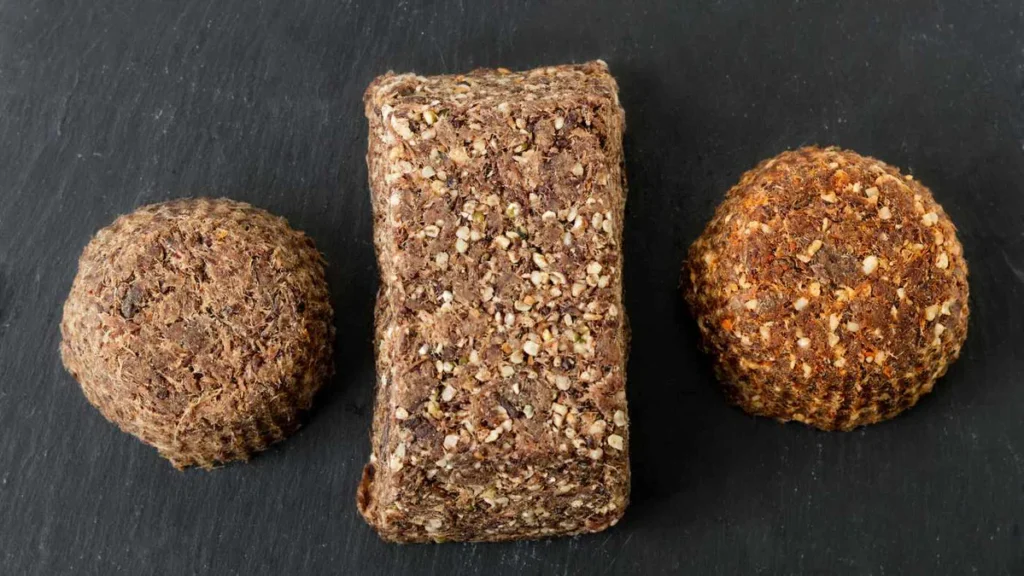
If there’s one Best Forgotten Survival Foods that deserves a comeback, it’s pemmican. This Native American invention is basically the granddaddy of all energy bars, but infinitely better. Think of it as nature’s answer to those overpriced protein bars cluttering your local gas station.
I made my first batch last winter, and honestly? It was a revelation. Pemmican combines dried meat, rendered fat, and berries into a calorie-dense powerhouse that can keep you going for hours. The traditional recipe creates a food that can last up to 50 years without refrigeration. Let that sink in – fifty years!
The Pemmican Advantage:
- 450+ calories per 100g serving
- Complete protein profile
- Essential fatty acids from rendered fat
- Natural preservative properties
- Requires zero cooking or preparation
Pros: Incredible shelf life, massive calorie density, authentic survival food with proven track record Cons: Acquired taste, can be expensive if buying pre-made, time-intensive to make from scratch Price Range: $15-25 per pound for quality commercial versions
The beauty of pemmican lies in its simplicity and effectiveness. When Lewis and Clark were exploring the American frontier, this was their go-to fuel. If it was good enough to power one of history’s greatest expeditions, it’s probably good enough for your emergency stash.
2. Honey – Liquid Gold That Never Dies

Here’s a fun fact that’ll make you feel like a trivia champion at your next dinner party: archaeologists have found 2000-year-old honey in Egyptian tombs that’s still perfectly edible. No joke. This sweet miracle has an indefinite shelf life, which makes it the ultimate survival food luxury item.
But honey isn’t just about lasting forever – it’s a legitimate medicinal powerhouse. I keep several pounds of raw, local honey in my pantry, and it’s saved me more times than I can count. Sore throat? Honey. Need quick energy? Honey. Wound that won’t heal? You guessed it – honey.
Why Honey Rules Emergency Preparedness:
- Natural antiseptic and antibiotic properties
- Instant energy source (simple carbohydrates)
- Soothes digestive issues
- Never spoils when properly stored
- Can be used as a natural preservative for other foods
Pros: Infinite shelf life, multiple medicinal uses, readily available, tastes amazing Cons: Heavy to transport, attracts insects if not sealed properly, high sugar content Price Range: $8-15 per pound for quality raw honey
The key is buying raw, unprocessed honey from local beekeepers when possible. The stuff in those cute little bears at the grocery store? That’s basically honey-flavored corn syrup. Get the real deal, and you’ll have liquid gold that could outlast your great-grandchildren.
3. Buckwheat – The Misunderstood Powerhouse
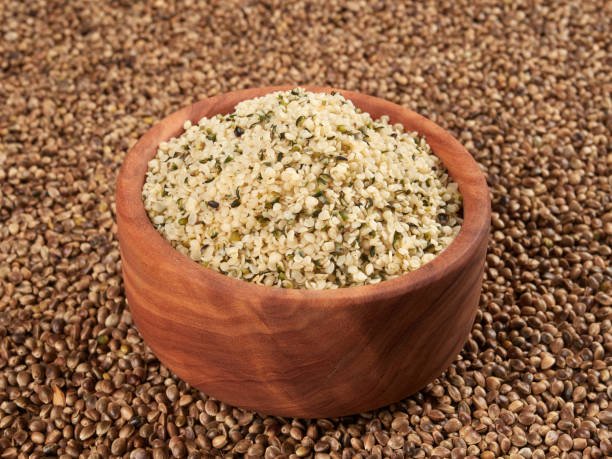
Plot twist: buckwheat isn’t actually wheat. Mind blown, right? This forgotten grain is technically a seed, which means it’s naturally gluten-free and packed with more protein than most actual grains. I discovered buckwheat during my quest to find alternatives to rice and wheat, and now it’s become a staple in my survival pantry.
What makes buckwheat absolutely brilliant for survival scenarios is its incredible nutritional density. We’re talking complete proteins, all essential amino acids, plus a boatload of fiber, magnesium, and antioxidants. It’s like nature decided to pack everything you need into one tough little seed.
Buckwheat’s Survival Superpowers:
- 10+ year shelf life when stored properly
- Complete protein source (rare for plant foods)
- Cooks faster than rice or wheat
- Naturally gluten-free
- Grows in harsh conditions (great for post-crisis gardening)
Pros: Excellent nutritional profile, versatile cooking applications, long storage life, relatively inexpensive Cons: Strong, earthy flavor that some find overwhelming, can become mushy if overcooked Price Range: $3-6 per pound in bulk
I love making buckwheat pancakes for weekend breakfast, but in a survival situation, you could eat this stuff as porridge, grind it into flour, or even sprout it for fresh greens. It’s the Swiss Army knife of forgotten survival foods.
4. Chia Seeds – Ancient Energy in Tiny Packages
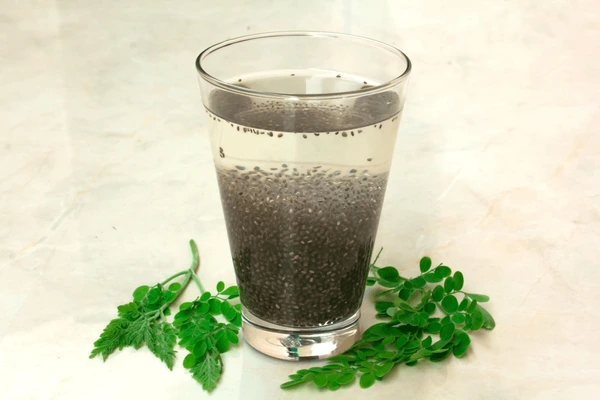
Remember those weird Chia Pets from the ’90s? Turns out, those little seeds were survival superfoods all along. The Aztec and Mayan warriors used to survive on nothing but chia seeds and water during long battles. That’s not marketing hype – that’s historical fact.
These tiny black and white seeds might look insignificant, but they pack more omega-3 fatty acids than salmon, more fiber than flax seeds, and enough protein to make quinoa jealous. Plus, they have this amazing ability to absorb up to 12 times their weight in water, creating a gel-like substance that keeps you hydrated and full.
Chia Seed Survival Stats:
- 4-5 year shelf life
- 5g protein per ounce
- 12g fiber per ounce
- High in calcium, magnesium, and phosphorus
- Can be eaten raw or cooked
Pros: Incredible nutritional density, natural hydration properties, versatile use, no cooking required Cons: Can be expensive per pound, texture turns some people off, needs proper storage to prevent rancidity Price Range: $8-12 per pound
The coolest thing about chia seeds? You can make them into puddings, add them to water for an instant energy drink, or just sprinkle them on literally anything. In a survival situation, a couple tablespoons in water can keep you going for hours.
5. Lentils – The Protein Powerhouse That Lasts Forever

If lentils were a person, they’d be that reliable friend who’s always there when you need them. Not flashy, not trendy, but absolutely dependable. These little forgotten legumes have been feeding civilizations for over 10,000 years, and they’re still one of the best survival foods you can stockpile.
I’ve got about 20 pounds of various lentils in my pantry right now – red, green, black, yellow – and they’re my go-to when I need a quick, nutritious meal. Unlike beans, lentils don’t need soaking, they cook relatively fast, and they’re packed with protein and fiber.
Lentil Survival Benefits:
- 5+ year shelf life when stored properly
- 25% protein by weight
- High in iron, folate, and potassium
- Quick cooking time (15-30 minutes)
- Extremely affordable
Pros: Excellent protein source, fast cooking, very affordable, multiple varieties for flavor variety Cons: Can cause digestive issues if you’re not used to them, plain flavor requires seasoning Price Range: $2-4 per pound in bulk
Here’s a pro tip: buy lentils in bulk from restaurant supply stores or co-ops. You’ll get restaurant-quality legumes at a fraction of grocery store prices, and you can store them in food-grade buckets for decades.
6. Quinoa – The Complete Protein Grain That Isn’t
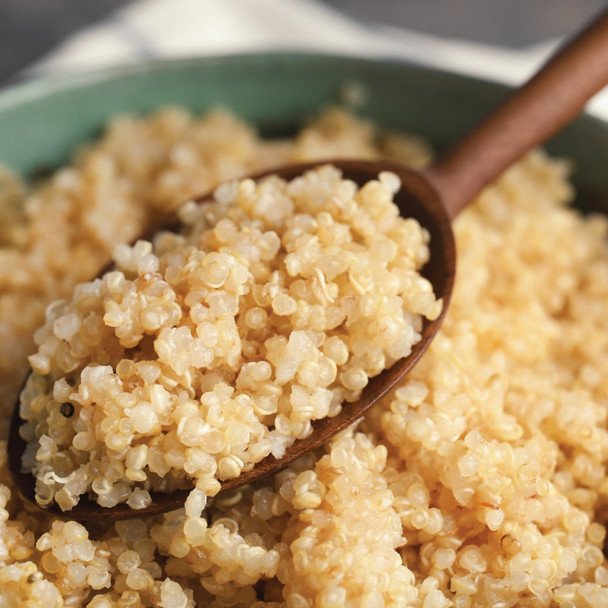
Quinoa had its moment in the spotlight about a decade ago, then sort of faded into the background of trendy superfoods. Big mistake, because this ancient grain (technically another seed, but who’s counting?) is absolutely perfect for survival scenarios.
The Incas called it “chisaya mama,” which translates to “mother of all grains.” They weren’t wrong. Quinoa contains all nine essential amino acids, making it a complete protein – something incredibly rare in the plant world. I’ve been experimenting with quinoa storage, and properly stored, this stuff can last years while maintaining its nutritional value.
Quinoa’s Survival Resume:
- Complete protein profile
- High in lysine (often lacking in grain-based diets)
- Cooks in 15-20 minutes
- Naturally gluten-free
- Good source of magnesium and iron
Pros: Complete protein, quick cooking time, pleasant nutty flavor, versatile preparation methods Cons: More expensive than other grains, needs thorough rinsing to remove bitter coating, can get mushy Price Range: $5-8 per pound
The key with quinoa is buying it in bulk and storing it properly in airtight containers. It might cost more upfront than rice or wheat, but the nutritional payoff makes it worth every penny.
7. Dried Chickpeas – The Versatile Survival Staple
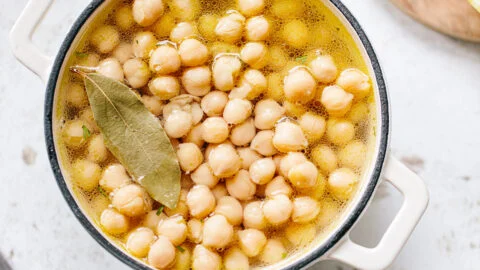
Chickpeas might be having a moment with the whole hummus craze, but these protein-rich legumes have been sustaining Middle Eastern and Mediterranean populations for thousands of years. What most people don’t realize is that dried chickpeas can last over 30 years when properly stored.
I love chickpeas because they’re like the chameleon of survival foods. Grind them into flour for flatbread, cook them whole for protein-packed stews, or even roast them for crunchy snacks. Plus, they’re one of the few foods that actually taste better after long storage – the flavors seem to concentrate over time.
Chickpea Survival Advantages:
- 30+ year potential shelf life
- 20g protein per cup cooked
- High in folate, fiber, and iron
- Can be ground into flour
- Naturally gluten-free
Pros: Incredibly long shelf life, high protein content, multiple preparation methods, readily available Cons: Long soaking and cooking time, can cause gas, plain flavor needs enhancement Price Range: $2-4 per pound dried
Pro tip: if you’re serious about long-term storage, invest in a grain mill. Being able to grind chickpeas into fresh flour opens up a world of bread-making possibilities when wheat isn’t available.
8. Rolled Oats – Breakfast That Lasts Decades

Oats get a bad rap for being boring, but these nutrient-dense grains are survival gold. I’m talking about real rolled oats here, not those sugar-bomb instant packets. When properly stored with oxygen absorbers, rolled oats can last up to 30 years while maintaining most of their nutritional value.
The beauty of oats lies in their simplicity and versatility. Raw oats can be ground into flour, cooked into porridge, or even eaten raw when you’re in a pinch. They’re also incredibly filling due to their high fiber content – a small bowl will keep you satisfied for hours.
Oats for Long-term Survival:
- 30-year shelf life with proper storage
- High in beta-glucan fiber
- Good source of protein and minerals
- Can be prepared multiple ways
- Extremely affordable
Pros: Amazing shelf life, very affordable, filling and nutritious, familiar taste for most people Cons: Plain flavor, can get monotonous, needs flavoring or mix-ins for variety Price Range: $1-3 per pound in bulk
I keep about 50 pounds of rolled oats in my storage room, sealed in mylar bags with oxygen absorbers. It’s basically breakfast insurance for the next three decades.
9. Canned Sardines – Omega-3 Powerhouses in Tiny Packages
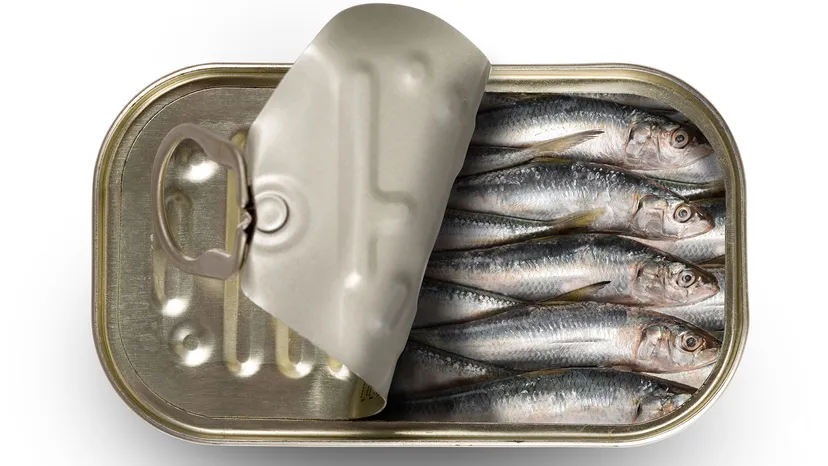
I know, I know. Sardines aren’t exactly Instagram-worthy. But these little omega-3 rich fish pack more nutrition per ounce than almost any other food on the planet. Plus, they’re one of the few canned foods that actually taste better than their fresh counterparts.
Sardines are sustainability superstars too. They’re low on the food chain, which means minimal mercury contamination, and they reproduce quickly, making them an environmentally responsible choice. From a survival perspective, they’re pure genius – complete protein, healthy fats, calcium from the bones, and a two-year shelf life.
Sardine Survival Stats:
- 2-year shelf life
- 25g protein per can
- Highest omega-3 content of any fish
- Calcium from edible bones
- Ready to eat, no cooking required
Pros: Incredible nutritional density, ready-to-eat convenience, sustainable seafood choice, affordable protein Cons: Strong fishy taste, not everyone’s favorite, can be messy to eat Price Range: $1-3 per can
Here’s how I got over my sardine aversion: I started mixing them into pasta salads and grain bowls. The strong flavor becomes an asset when you need to make bland survival foods more interesting.
10. Millet – The Gluten-Free Ancient Grain
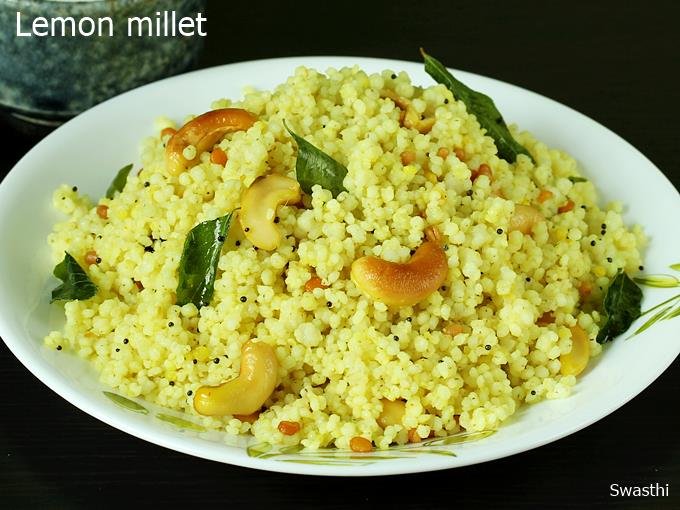
Millet is probably the most underrated grain in America, which is weird because it feeds about one-third of the world’s population. This gluten-free grain has sustained African and Asian civilizations for thousands of years, and it’s perfectly suited for survival scenarios.
What I love about millet is its resilience. It grows in harsh, dry conditions where other grains fail, which makes it perfect for post-disaster gardening. Plus, it cooks faster than brown rice and has a pleasant, slightly sweet flavor that doesn’t require a lot of seasoning.
Millet’s Survival Benefits:
- 3-5 year shelf life
- Naturally gluten-free
- High in protein and B vitamins
- Drought-resistant crop
- Quick cooking time
Pros: Good for gluten-sensitive individuals, pleasant mild flavor, cooks relatively quickly, nutritionally dense Cons: Less familiar to most Americans, can be bland without seasoning, harder to find in stores Price Range: $3-5 per pound
I use millet as a rice substitute in most dishes, and honestly, I prefer the texture. It’s lighter and fluffier than rice, with a subtle nutty flavor that works with both sweet and savory preparations.
11. Powdered Eggs – Protein That Never Goes Bad

Powdered eggs got a bad reputation from military MREs, but modern freeze-dried and dehydrated eggs are actually pretty amazing. With a 5-10 year shelf life and all the protein and nutrients of fresh eggs, they’re perfect for survival scenarios where fresh animal products aren’t available.
I was skeptical until I tried some high-quality powdered eggs in scrambled form. They’re not quite the same as fresh eggs, but they’re surprisingly close, and they work perfectly in baking applications. Plus, you can’t beat the convenience – no refrigeration needed, and they take up a fraction of the space.
Powdered Egg Advantages:
- 5-10 year shelf life
- Complete protein source
- Works in baking and cooking
- Lightweight and compact
- No refrigeration needed
Pros: Long shelf life, versatile cooking applications, complete protein, space-efficient storage Cons: Different texture from fresh eggs, more expensive per serving, quality varies by brand Price Range: $15-25 per can (equivalent to 2-3 dozen eggs)
The trick with powdered eggs is buying from reputable suppliers who use proper freeze-drying or dehydration methods. Cheap powdered eggs taste like cardboard, but good ones are genuinely useful.
12. Canned Pumpkin – Vitamin A in Convenient Form
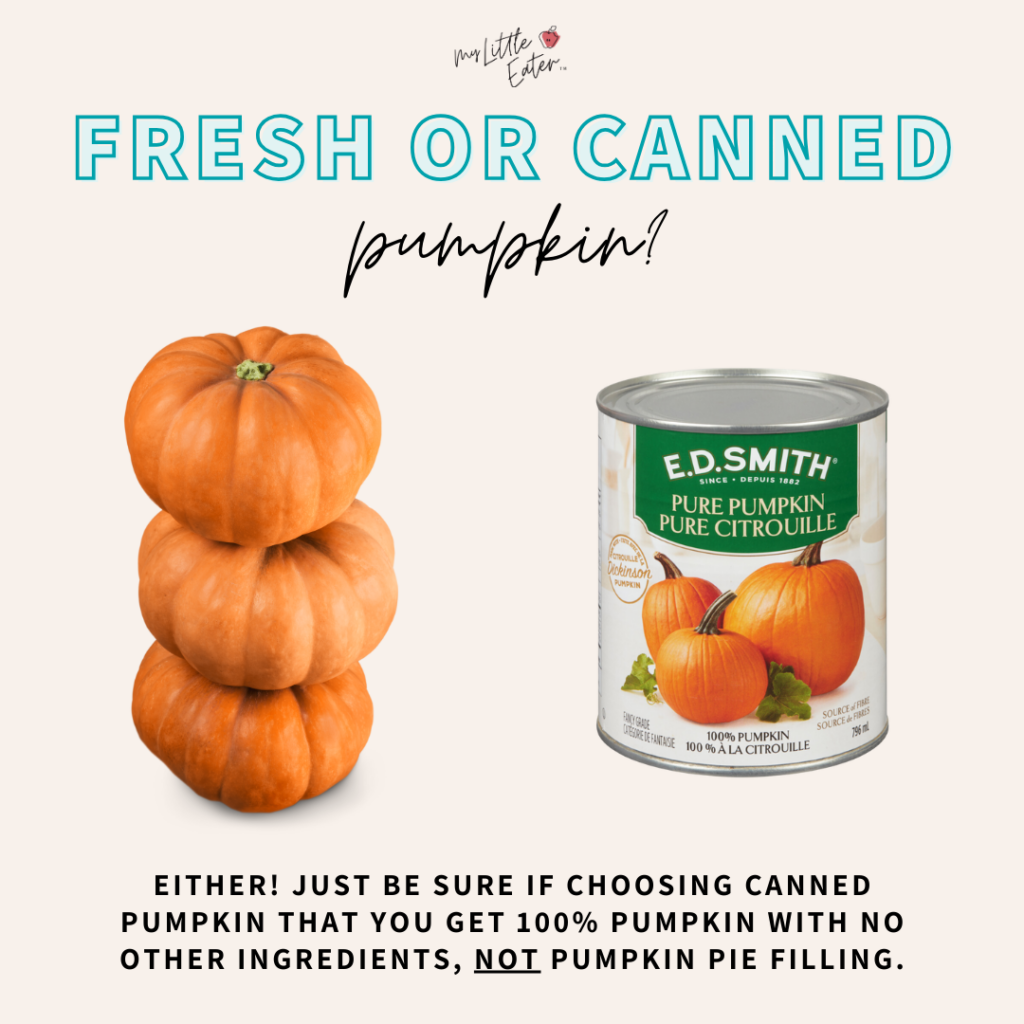
Canned pumpkin is one of those forgotten emergency foods hiding in plain sight in your grocery store. Most people only think about it during Thanksgiving, but this orange powerhouse is loaded with vitamin A, fiber, and potassium, with a shelf life of several years.
What makes canned pumpkin brilliant for survival is its versatility. You can eat it straight from the can (surprisingly not terrible), mix it into soups and stews, use it in baking, or even thin it out for baby food. Plus, it’s naturally sweet, which can be a huge morale booster when you’re living on bland survival foods.
Canned Pumpkin Benefits:
- 2-3 year shelf life
- Extremely high in vitamin A
- High fiber content
- Natural sweetness
- Multiple preparation options
Pros: High nutritional value, naturally sweet, versatile cooking applications, readily available, affordable Cons: Strong flavor that doesn’t work in all dishes, heavy cans for transport, seasonal availability affects price Price Range: $1-2 per can
I keep about 20 cans of pumpkin in my pantry year-round. It’s one of those foods that can turn a boring bowl of oatmeal into something that actually tastes good.
13. Dried Seaweed – Ocean Minerals for Land Dwellers

Seaweed might seem exotic, but it’s one of the most mineral-rich survival foods on the planet. We’re talking about a food source that contains virtually every mineral your body needs, including iodine, which is often lacking in inland diets.
I started incorporating dried seaweed into my diet after learning about its incredible mineral profile. Kelp, nori, dulse, wakame – each type has slightly different nutritional benefits, but all are powerhouses of vitamins and minerals that can prevent nutritional deficiencies during extended survival scenarios.
Seaweed Survival Properties:
- 2-3 year shelf life when properly dried
- Complete mineral profile
- High in iodine (essential for thyroid function)
- Umami flavor enhancer
- Can be eaten raw or cooked
Pros: Incredible mineral density, natural flavor enhancer, relatively long shelf life, lightweight Cons: Strong oceanic flavor, can be expensive, may contain high sodium levels, unfamiliar to many people Price Range: $5-15 per pound depending on type
Start with milder varieties like nori (sushi seaweed) if you’re new to sea vegetables. Once you acquire the taste, you can graduate to stronger flavors like kelp and dulse.
14. Kamut Grain – The Ancient Wheat Alternative
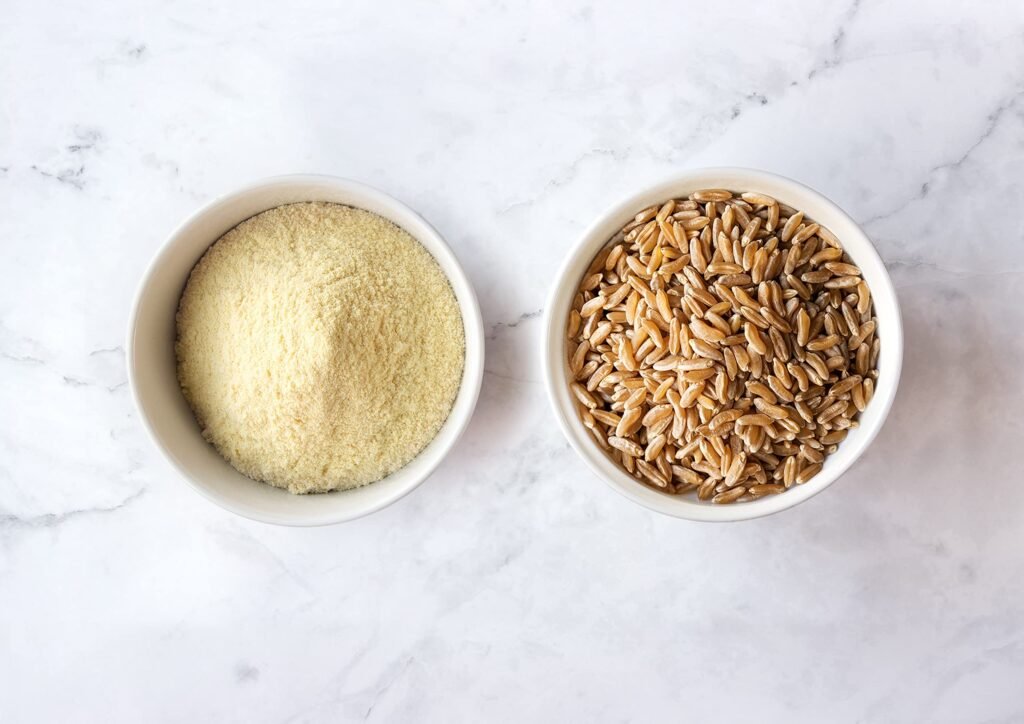
Kamut is an ancient variety of wheat that’s been virtually unchanged for thousands of years. Many people who can’t tolerate modern wheat find that they can digest kamut without problems, making it an excellent ancient grain for survival scenarios.
What sets kamut apart is its incredible protein content – up to 40% higher than modern wheat – and its natural resistance to pests and diseases. This means it stores better and longer than regular wheat, making it perfect for long-term survival planning.
Kamut’s Ancient Advantages:
- Higher protein than modern wheat
- Many wheat-sensitive people can tolerate it
- Excellent storage characteristics
- Rich, buttery flavor
- Can be ground into flour or eaten whole
Pros: High protein content, often tolerable for wheat-sensitive individuals, excellent flavor, good storage life Cons: More expensive than regular wheat, harder to find, still contains gluten Price Range: $4-7 per pound
I use kamut berries in soups and stews, and I grind them into flour for bread making. The flavor is noticeably richer and nuttier than modern wheat.
15. Various Nut Butters – Calorie-Dense Energy Sources
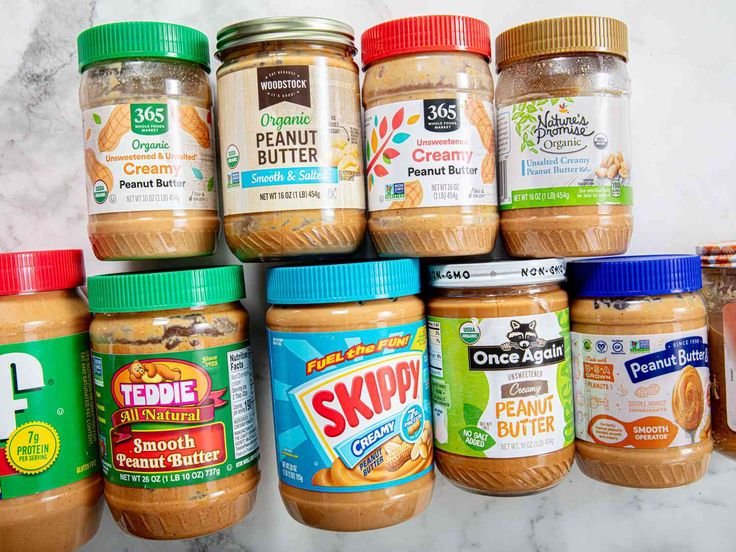
While everyone knows about peanut butter, there’s a whole world of nut butters that offer different nutritional profiles and flavors. Almond butter, sunflower seed butter, cashew butter, and tahini (sesame seed butter) all provide concentrated calories and healthy fats with decent shelf lives.
Nut butters are survival food gold because they’re calorie-dense, require no preparation, and provide both protein and healthy fats. They’re also excellent for maintaining morale – there’s something psychologically comforting about familiar, tasty foods during stressful times.
Nut Butter Survival Benefits:
- 1-2 year shelf life (longer for natural varieties)
- High calorie density (180-200 calories per 2 tbsp)
- Good source of healthy fats and protein
- No preparation required
- Familiar, comforting taste
Pros: High calorie density, familiar taste, no cooking required, good source of healthy fats Cons: Can be expensive, limited shelf life compared to other survival foods, heavy for transport Price Range: $5-12 per jar depending on type
Natural nut butters (without added oils) tend to last longer than commercial varieties with stabilizers. Store them in cool, dark places and they’ll maintain quality well past their printed dates.
16. Canned Tuna – Affordable Ocean Protein
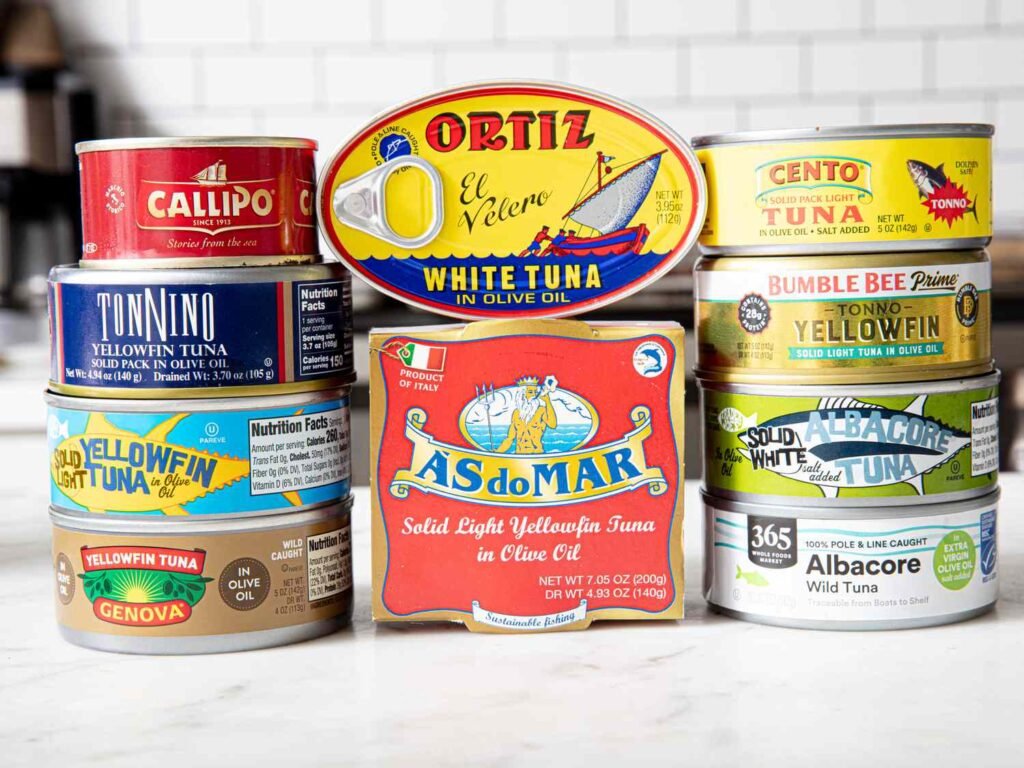
Canned tuna might be the most underappreciated survival food in existence. It’s affordable, widely available, packed with protein, and has a solid two-year shelf life. Plus, unlike many survival foods, most people actually enjoy eating it.
The key is choosing the right type. Light tuna has lower mercury levels than albacore, and water-packed versions have fewer calories but longer shelf life than oil-packed. I keep both varieties in my emergency stash – light tuna for everyday consumption and oil-packed for when I need maximum calories.
Canned Tuna Advantages:
- 2-year shelf life
- 25g protein per can
- Omega-3 fatty acids
- Ready to eat
- Widely available and affordable
Pros: Excellent protein source, familiar taste, ready-to-eat convenience, affordable, widely available Cons: Mercury content concerns with frequent consumption, can get monotonous, not environmentally sustainable Price Range: $1-3 per can
Mix canned tuna with other shelf-stable ingredients like pasta, rice, or crackers to create more satisfying meals. A little creativity goes a long way with basic ingredients.
17. Fermented Soups – Gut Health for Survival
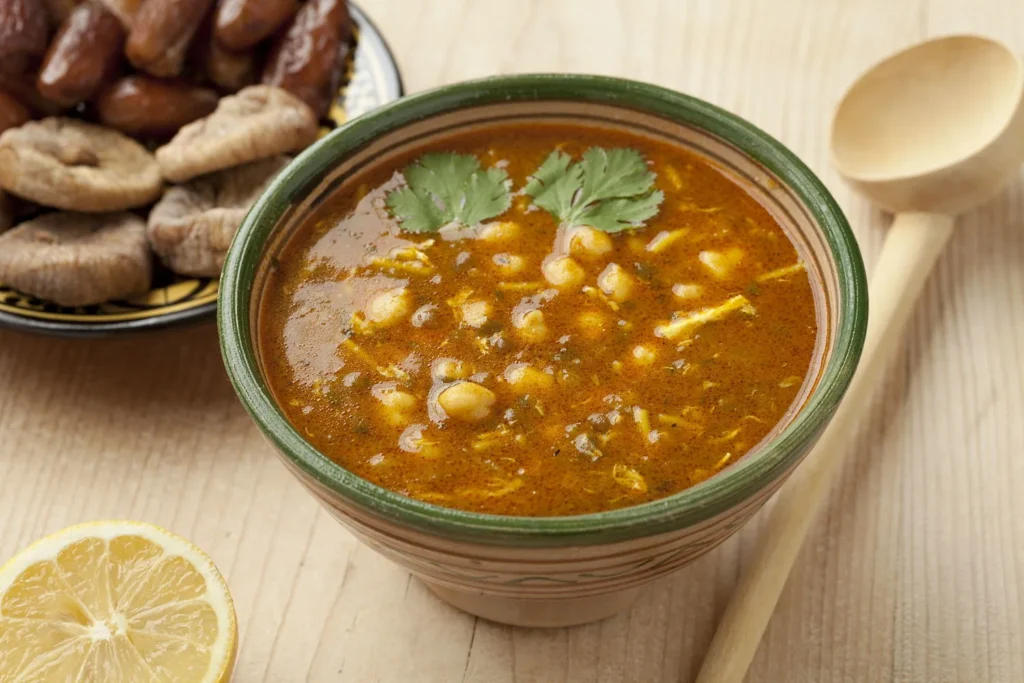
Fermented foods are having a moment in the health world, and for good reason. Traditional fermented soups like miso soup, kimchi jjigae, and sauerkraut-based soups provide probiotics that support gut health – crucial when your diet consists mainly of shelf-stable foods.
These traditional recipes were developed specifically for survival situations. Fermentation preserves vegetables and adds beneficial bacteria that aid digestion. During long winters or famines, these soups provided essential nutrients and kept digestive systems healthy.
Fermented Soup Benefits:
- Probiotic benefits for gut health
- Traditional preservation methods
- Rich umami flavors
- Can be made with shelf-stable ingredients
- Supports immune function
Pros: Excellent for digestive health, rich complex flavors, traditional survival wisdom, can use stored ingredients Cons: Requires learning traditional recipes, some ingredients may be hard to source, fermentation knowledge needed Price Range: Varies widely depending on ingredients
Start with simple miso soup – just miso paste, seaweed, and hot water. It’s incredibly nourishing and takes minutes to prepare.
18. Mongolian Probiotic Dairy – Fermented Nutrition
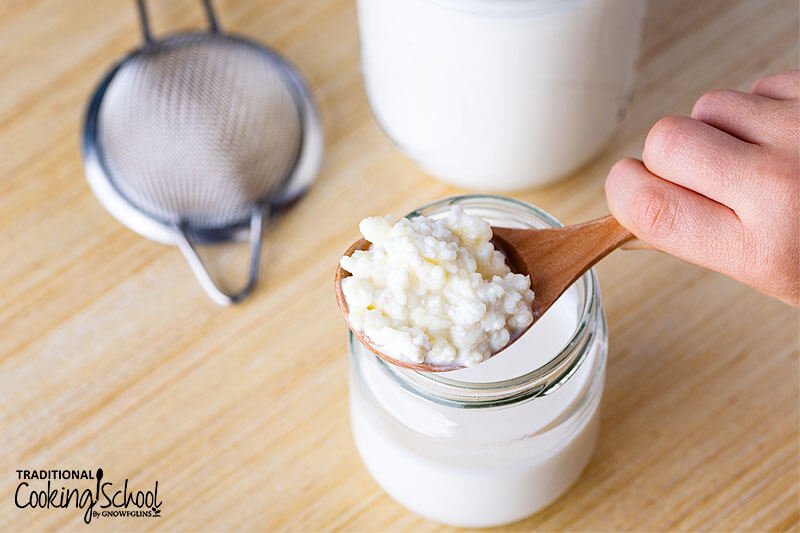
Traditional Mongolian herders developed various fermented dairy products that could survive harsh conditions without refrigeration. Kefir grains, in particular, can ferment milk into a probiotic powerhouse that keeps for days at room temperature.
These fermented dairy products provide probiotics, protein, and B vitamins while being naturally preserved through fermentation. The cultures are incredibly hardy and can be maintained indefinitely with proper care.
Probiotic Dairy Advantages:
- Self-perpetuating cultures (kefir grains multiply)
- Rich in probiotics and B vitamins
- Can be made with shelf-stable milk powder
- Traditional survival food of nomadic peoples
- Supports immune and digestive health
Pros: Self-renewing food source, excellent probiotic content, can use powdered milk, traditional preservation method Cons: Requires maintaining live cultures, learning curve for fermentation, may not appeal to everyone Price Range: $10-20 for starter cultures, then ongoing cost of milk
Kefir grains can last indefinitely with proper care, making them essentially a lifetime investment in fermented nutrition.
19. Raw Natural Honey – Premium Liquid Medicine
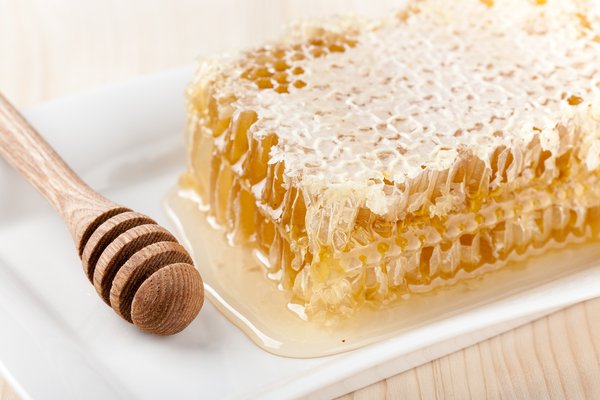
While I mentioned honey earlier, raw natural honey deserves special recognition. Unlike processed honey, raw honey contains pollen, propolis, and beneficial enzymes that provide additional health benefits beyond basic nutrition.
Raw honey from local sources may help with seasonal allergies, and its antimicrobial properties make it valuable for wound care in survival situations. The crystallization that occurs over time doesn’t indicate spoilage – it’s actually a sign of quality.
Raw Honey Premium Benefits:
- Contains beneficial enzymes and pollen
- Potential allergy relief from local varieties
- Superior antimicrobial properties
- Never spoils
- Can be used medicinally
Pros: Additional health benefits over processed honey, potential allergy relief, superior medicinal properties Cons: More expensive than regular honey, may crystallize (though this doesn’t affect quality) Price Range: $12-25 per pound for quality raw honey
Look for local beekeepers at farmers markets. Not only will you get better honey, but you’ll be supporting local food systems that could be crucial in crisis situations.
20. Aquaponics-Grown Greens – Fresh Food When You Need It

While not a stored food, aquaponics systems represent the ultimate in survival food production. These systems combine fish farming with vegetable growing, creating a sustainable cycle that produces both protein and fresh vegetables year-round.
I’ve been experimenting with small aquaponics setups, and the potential is incredible. You can grow fresh leafy greens, herbs, and small vegetables while raising fish for protein. It’s like having a complete food system that runs on fish waste and sunlight.
Aquaponics Survival Benefits:
- Fresh vegetables year-round
- Dual protein and vegetable production
- Sustainable and self-maintaining
- Can operate in small spaces
- Provides psychological benefits of fresh food
Pros: Fresh food production capability, sustainable system, dual protein/vegetable output, can work indoors Cons: Initial setup cost and complexity, requires ongoing maintenance, learning curve, needs power for pumps Price Range: $200-2000+ depending on system size
Start small with desktop aquaponics kits to learn the basics before investing in larger systems. The knowledge you gain could be invaluable in long-term survival scenarios.
Get the essential food book.
Conclusion: Building Your Forgotten Foods Arsenal
After diving deep into these 20 forgotten survival foods, one thing becomes crystal clear: our ancestors weren’t just lucky to survive – they were smart. They developed these foods through thousands of years of trial and error, creating a nutritional safety net that could sustain entire civilizations through the worst of times. Best Forgotten Survival Foods
The beauty of these traditional survival foods lies not just in their incredible shelf lives or impressive nutritional profiles, but in their proven track record. These aren’t theoretical survival foods dreamed up in corporate labs – they’re time-tested solutions that have kept humans alive and thriving for millennia.
Here’s what I’ve learned from building my own forgotten foods arsenal: start small, focus on versatility, and don’t forget about taste. A survival food that nobody wants to eat is worse than useless – it’s demoralizing. But these forgotten gems? Many of them taste better than the processed junk we eat every day.
Your Next Steps:
Begin with three or four foods from this list that appeal to you most. Master their storage, preparation, and use in everyday cooking before moving on to others. Build knowledge alongside your stockpile, because Best Forgotten Survival Foods tool is the knowledge between your ears.
Whether you’re preparing for natural disasters, economic uncertainty, or just wanting to eat more nutritiously, these forgotten survival foods with amazing benefits offer a path to food security that doesn’t compromise on nutrition or taste. Our ancestors left us an incredible legacy – it’s time we started using it.
What’s your experience with traditional survival foods? Have you tried any of these forgotten gems? Share your stories and tips in the comments below – your experience could help others discover their new favorite survival food.


